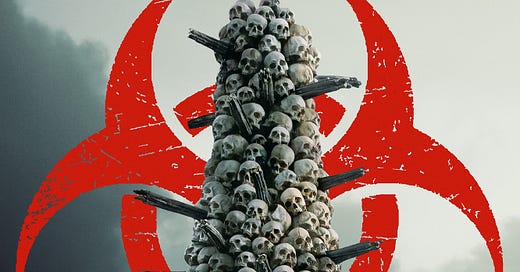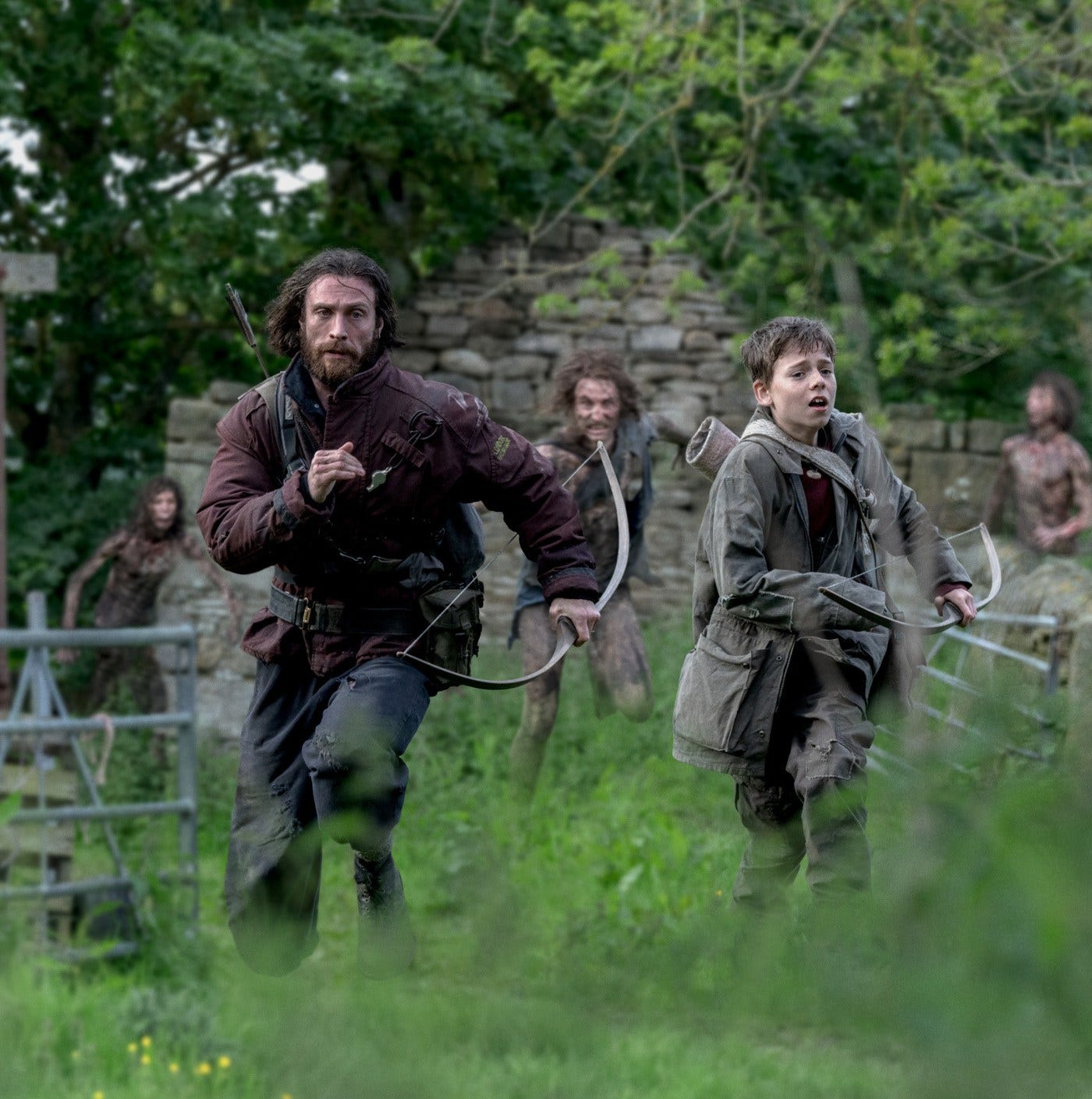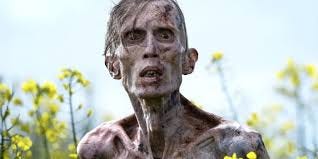28 Years Later: The theory of zombie evolution (review)
The horror franchise reboots with the impressive first film in a new trilogy
28 Years Later
115 minutes; R
Critic’s grade: B+
Where to watch: In theaters
“28 Years Later” begins with a few moments of peace that soon turn into a nightmare scenario. Blonde-headed kids huddle together, somewhere, watching the children’s show “Teletubbies.” On a little television, the multicolor characters spout their entertaining nonsense. Some of the tykes are amused, although one observant little girl begins to shed tears as the thumping and bumping, heard coming from outside the room, begins to grow louder. It’s becoming clear that something very bad is happening out there. Suddenly, the evil makes its presence known, and all bloody hell erupts. One little boy uses his wits and fast feet to escape the horrors.
That suspenseful, gruesome opening points to the modus operandi — non-stop action — that director Danny Boyle (“Slumdog Millionaire,” “Trainspotting”) and writer Alex Garland (director of “Warfare” and “Ex Machina”) take, off and on, with the third in a series of newfangled zombie movies. The franchise launched in 2002 with the gripping, genre-reinventing “28 Days Later,” also directed by Boyle and written by Garland. With a price tag of $8 million, it grossed nearly $83 million worldwide. The franchise continued in 2007 with the less provocative, if still gripping “28 Weeks Later,” for which Boyle and Garland were involved only as producers.
The first installment offered a new take on zombie lore. Sure, the fearsome if dumb creatures still lived to go on murderous rampages. But these new-breed undead, now simply known as “the infected,” were driven by pure, manic rage, perhaps reflecting the kind of anger that bubbled just beneath the surface in contemporary society. And, unlike the goofy, slow-moving, sometimes bumbling and stumbling hordes of old-school people eaters, as popularized via George Romero’s 1968 b/w shocker “Night of the Living Dead,” or the relentless walkers of the popular “Walking Dead” universe on TV, these zombies could run like the wind.
Following that prelude, “28 Years Later” begins in earnest in a picturesque seaside village, which might be straight out of a past century (or perhaps kin to insulated berg in M. Night Shyamalan’s “The Village.”) Folks are farming and fishing, buying and selling goods at a busy market, and making goods and weapons, like bows and arrows, by hand. As we soon learn, the community is an isolated Scottish island, during a time when all of Britain is under a decades-long quarantine, essentially abandoned to the infected hordes; the rest of Western Europe is counting on the theory that the zombies will eventually destroy each other and/or otherwise die off.
For the villagers, accessing the mainland is only possible by leaving through a heavily guarded front gate and crossing a causeway that is passable at low tide. Enter Jamie (Aaron Taylor-Johnson) and his 12-year-old son Spike (Alfie Williams, the film’s MVP). In a traditional ritual, the boy is prepping to make his first trip to the mainland, over the objections of his mother, Isla (Jodie Comer), who is sickly due to an unspecified illness. The entire community shows up to see the father-and-son off, and preparations commence for that night’s expected celebration of a successful outing.
This film’s novel question: What happens when zombie populations are left to their own devices? Why, the disease mutates and the infected evolve in unexpected directions: Some become grotesque bloblike creatures that survive by crawling on their bellies and are nourished by earthworms and the like, while others increase in predatory skills, with a few becoming “alphas,” muscular, fast-moving leaders of packs. They’re also able to reproduce, somehow. Why ask why?
During the film’s second half, Spike and Isla take an unauthorized trip to the mainland in search of the reclusive, eccentric Dr. Kelson, played by the always welcome Ralph Fiennes. Kelson initially appears to be a nutty Colonel Kurtz-type character — he decorates his compound with a tower of skulls — but is later revealed to be gentle, philosophical, and ultimately helpful.
“28 Years Later” also benefits from surging tides of metallic, punk-ish rock and makes use of a sometimes jarring visual style, courtesy of a filming rig that deploys 20 iPhones at once. Particularly during action sequences, that approach yields fast cuts, comic book angles, and odd, experimental flashes; the look is far edgier than in standard horror fare.
The film also gains from its narrative elasticity, sometimes functioning as a small drama, exploring father-son and then mother-son relationships, and sometimes feeling like an epic adventure.
It all comes to a stop with the surprising, oddly comic appearance of an intriguing new group of characters, clearly setting up the storyline for the second film in a new trilogy: “28 Years Later: The Bone Temple” is slated for release next January. Already shot, it’s written by Garland and directed by Nia DaCosta, and word is that Cillian Murphy (now an Oscar winner for “Oppenheimer”), who starred in “28 Days Later,” is in the cast. Let’s get chomping!
Copyright 2025 by Philip Booth. All rights reserved.






